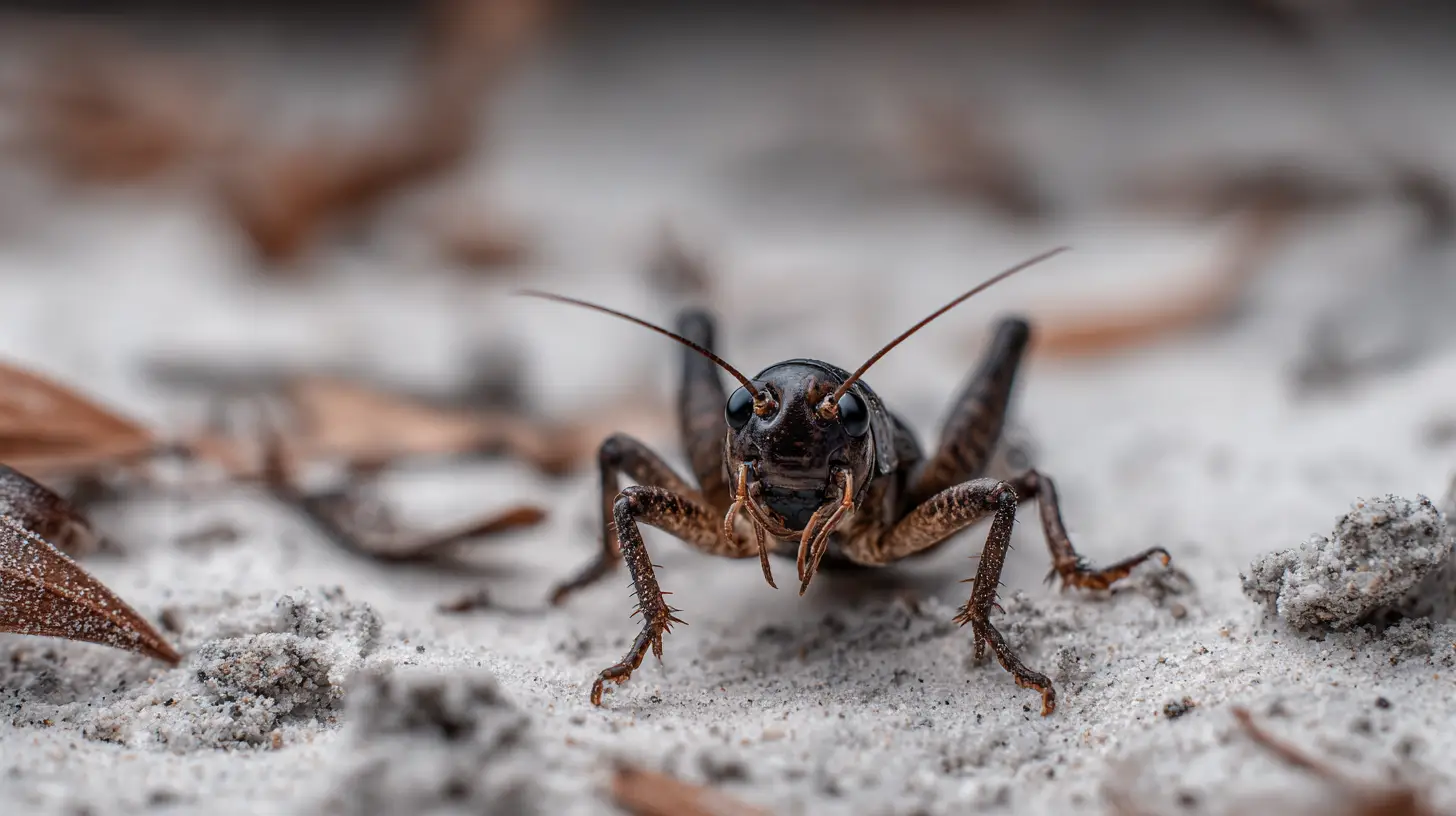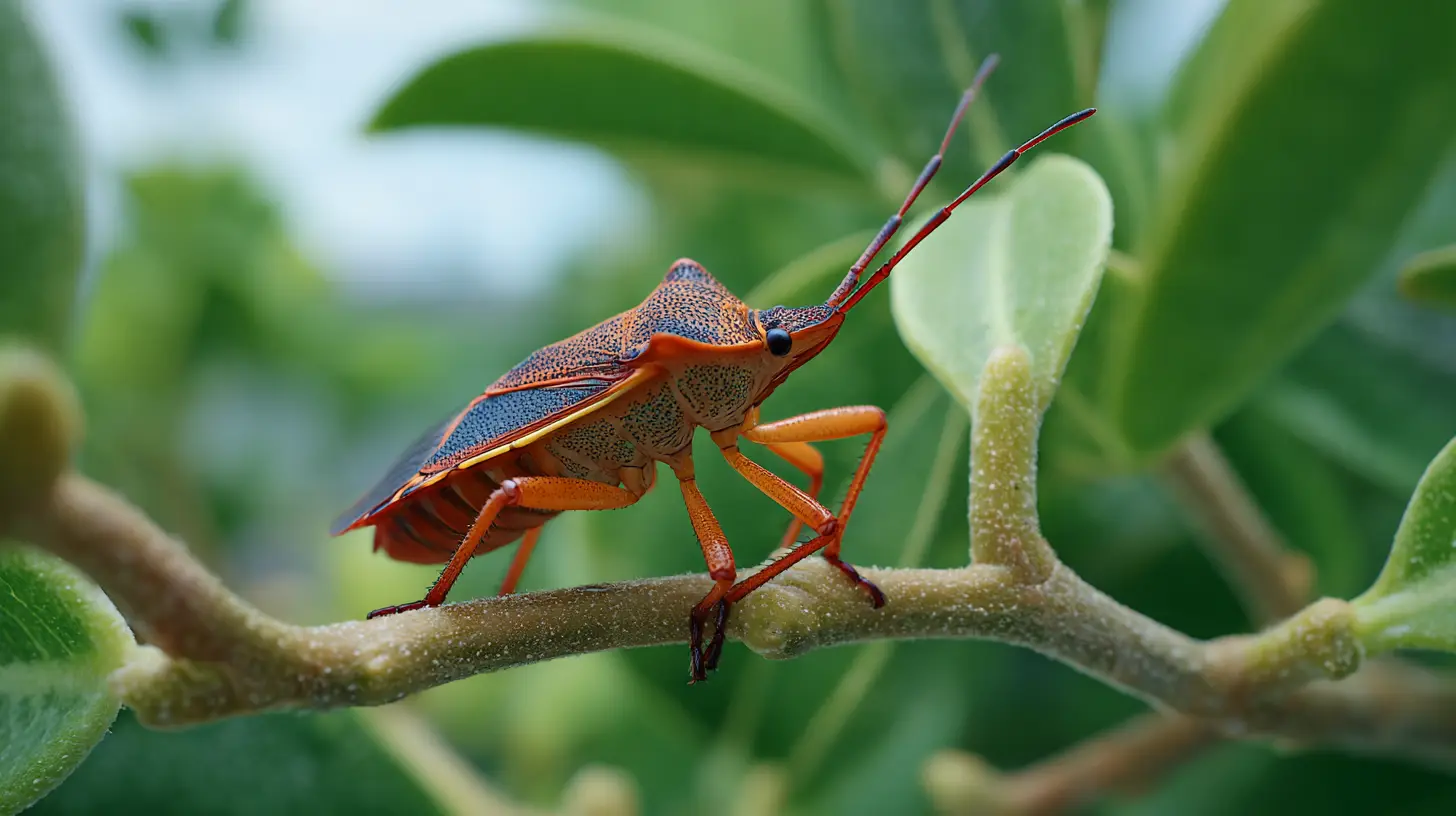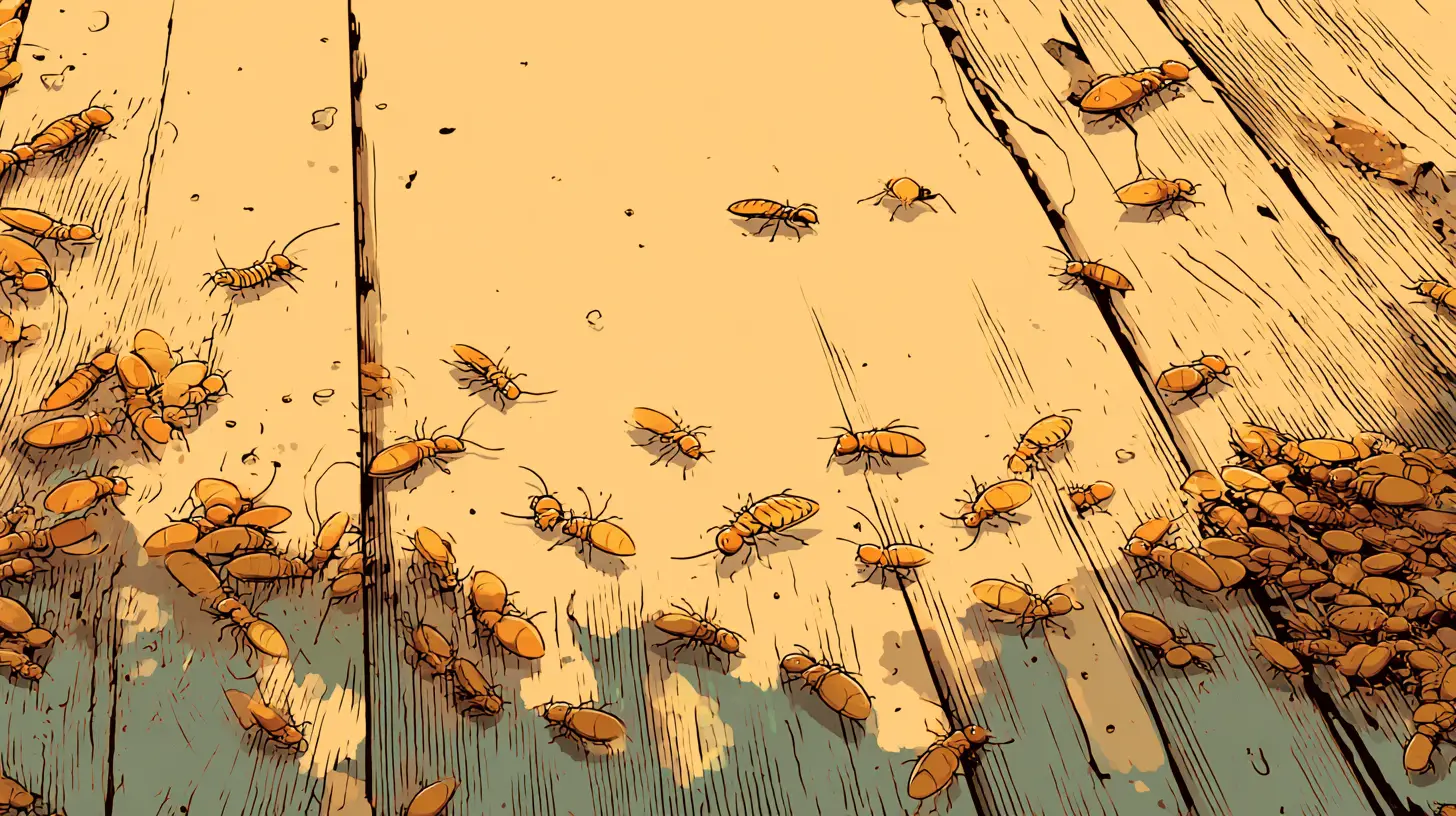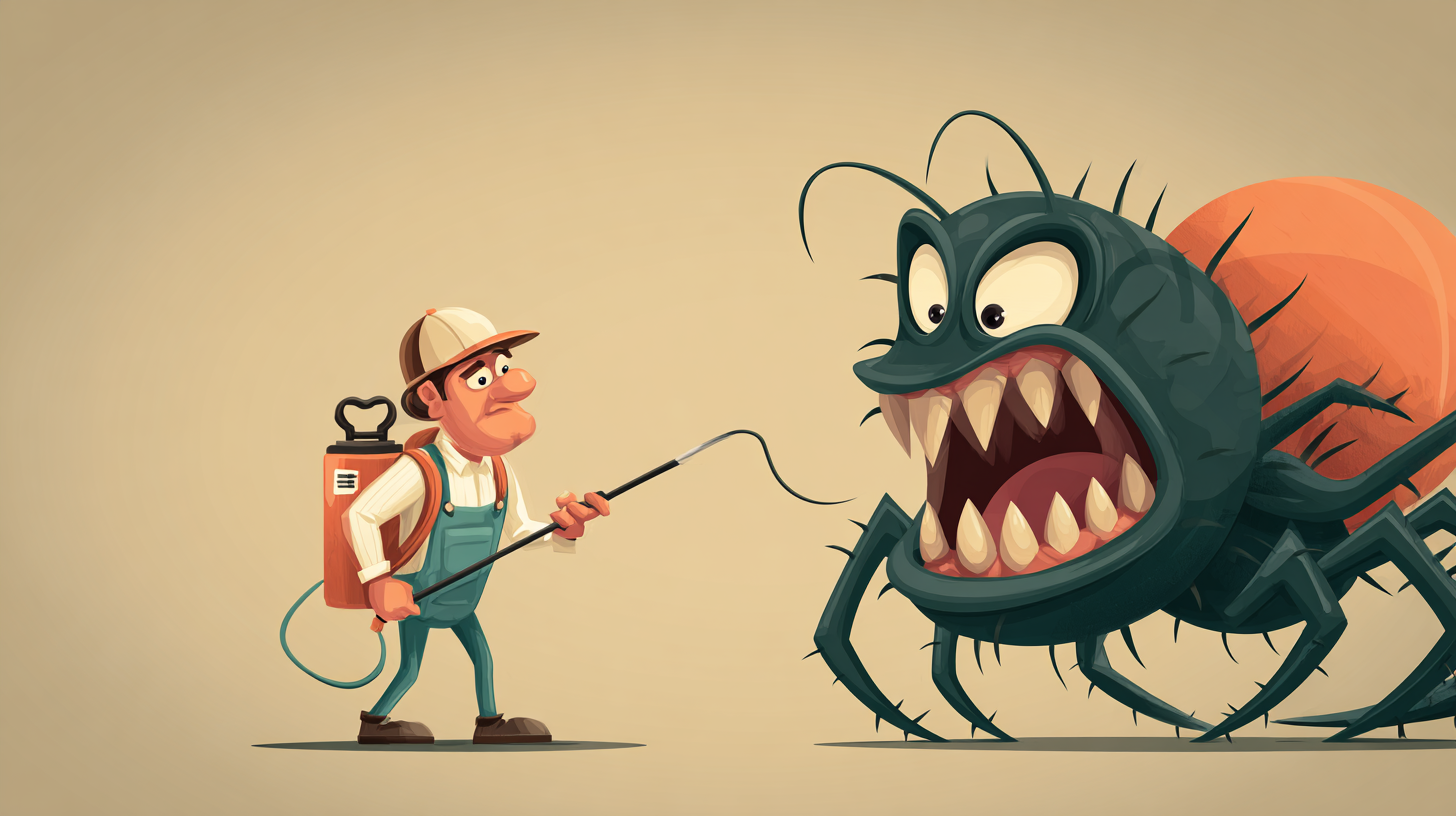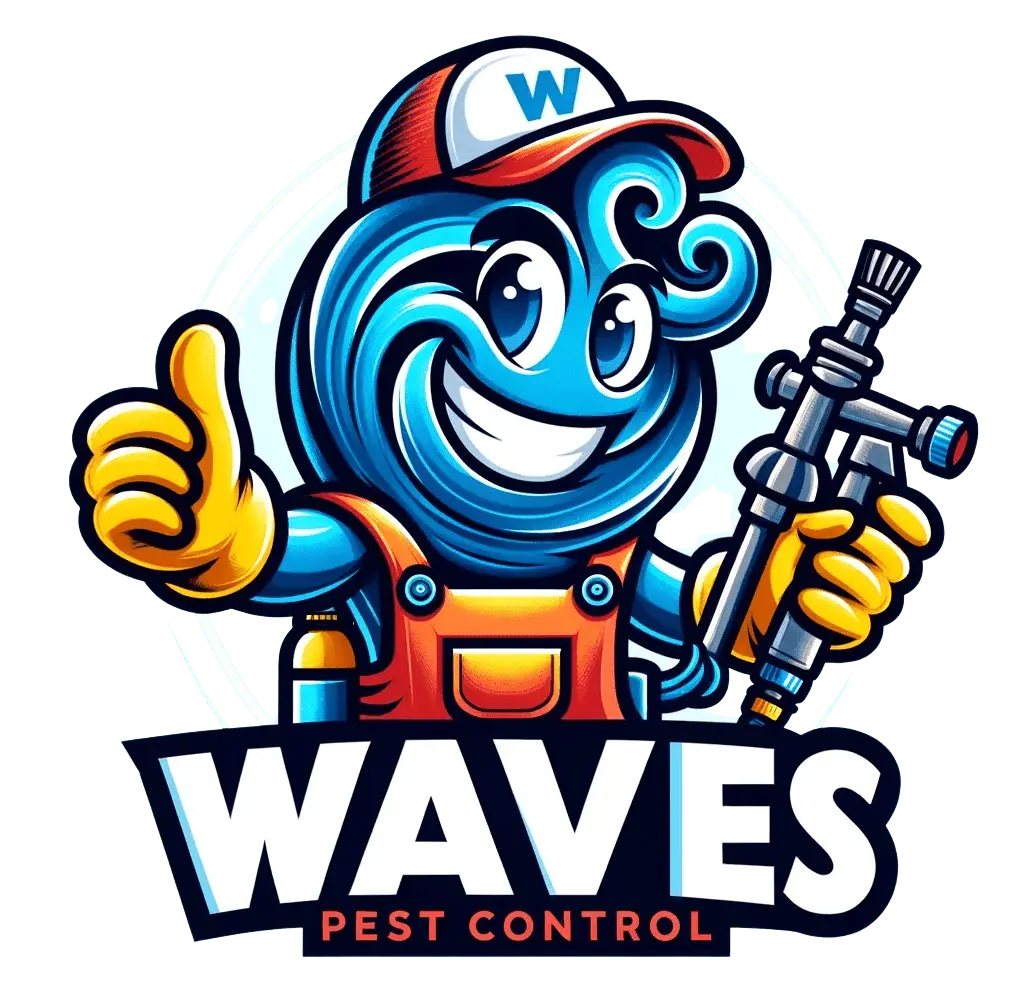
Table of Contents
If you’re trying to get rid of termites in Bradenton, you’re already doing the smartest thing: acting fast. Around here, termites don’t take winters off. They eat. Quietly. Relentlessly. And usually right behind your baseboards while you’re making dinner.
Waves Pest Control Lakewood Ranch works in Bradenton every day, and this guide lays out what matters most—what to look for, what works, what it costs, and how to keep termites from making a sequel.
Key takeaways
- Bradenton has three main offenders: subterranean, Formosan, and drywood termites.
- Mud tubes, frass (pellet droppings), wing piles, and hollow-sounding wood are the big red flags.
- DIY sprays won’t knock out a colony here; professional termite control in Bradenton does.
- Best results come from liquid soil treatments, bait systems, fumigation for drywood, or precise no-tent spot work.
- Preventive termite treatment in Bradenton (inspections + protection plan) costs less than repairs later.
Why Bradenton is termite heaven (and how that affects your home)
Warm, humid air + sandy soil + year-round moisture = perfect termite conditions. Subterranean and Formosan termites move through the soil and sneak in through expansion joints, plumbing penetrations, or hairline cracks. Drywood termites skip the dirt, fly in, and start new colonies inside rafters, trim, or furniture. Beachy charm doesn’t stop them; they thrive in West Bradenton bungalows, Lakewood Ranch builds, condo townhomes—everything wood-framed is fair game.
Spot the signs early (before the repair bill gets spicy)
- Mud tubes: Pencil-thin tunnels along slabs, piers, or garage walls.
- Frass: Tiny, hard, six-sided pellets under window frames, baseboards, or furniture (drywood termites’ calling card).
- Discarded wings: Little translucent wings near windowsills and light fixtures after a warm, humid evening.
- Wood problems: Hollow thuds when tapped, rippled paint, sagging floors, or sticky doors from warped frames.
- Odd noises: Faint “ticking” or rustling inside wood when the house is quiet.
If you see one sign, there are usually more. Snap a photo, save any pellets or wings in a baggie, and call a pro for confirmation.
What to do in the next 24 hours
- Leave evidence untouched so your tech can inspect it.
- Clear access points: Move storage away from walls, open attic hatches, and tidy under sinks.
- Check moisture: Fix active drips, empty planters sitting against the house, and set AC to dehumidify.
- Hold off on over-the-counter sprays: They scatter workers and make colonies harder to track.
What actually works in Bradenton (treatment options that deliver)
Liquid soil treatments (subterranean & Formosan)
A trench-and-treat around the foundation creates a lethal, long-lasting zone. Foraging termites pass through it and share it with the colony. Great for homes with slab foundations common around Bradenton.
- Good for: Active subterranean/Formosan activity, long-term perimeter protection.
- Timeline: 1 service visit + follow-ups.
- Typical budget range: About $1,000–$2,500 for many single-family homes, size and complexity dependent.
Termite bait systems (subterranean & Formosan)
Discreet stations around the yard attract foragers; once they feed on bait, they carry it back and the colony declines. Also perfect near waterways or wells where heavy soil treatments aren’t ideal.
- Good for: Whole-lot protection and colony elimination over time.
- Timeline: Installation + periodic monitoring; visible reduction in months.
- Budget pattern: Install fee + affordable maintenance visits each year.
Whole-structure fumigation (drywood)
When drywood colonies are widespread, tenting sends a gas through every stud bay and wood joint. It wipes out hidden pockets you’ll never see.
- Good for: Multiple-room or whole-home drywood infestations.
- Timeline: 1–2 days out of the house, then aeration and re-entry.
- Note: No residual—pair with ongoing inspections.
No-tent spot treatments (drywood)
Pinpoint injections (foams, dusts, liquids) where galleries are found. Minimal disruption and great when the infestation is localized.
- Good for: Early or small drywood issues, targeted follow-ups after tenting.
- Timeline: Same-day service; quick return to normal life.
What it costs (and why quotes vary)
- Home size and layout: Linear feet of foundation, add-ons, porches, and attached garages change the scope.
- Species: Formosan colonies can be larger and faster; plans may combine liquid + bait.
- Access: Tight crawlspaces, paver patios, or pool decks can add labor.
- History: Previous termite treatments, visible damage, and conducive conditions matter.
Honest range for many Bradenton homes: about $1,000–$2,500 for initial corrective work, then a few hundred per year for monitoring or renewal—far less than replacing subflooring or window headers.
Bradenton-specific tips that save headaches
- Mulch moderation: Keep mulch 6–12 inches from the slab; think of it like a moat, not a blanket against the wall.
- Irrigation sanity: Re-aim sprinkler heads so they aren’t soaking the foundation or siding.
- Wood storage: Firewood, fence pickets, or project lumber go on racks off the ground—away from the house.
- Gutter health: Clean gutters; direct downspouts several feet from the foundation.
- Attic checks: In older riverfront and coastal neighborhoods, peek seasonally for drywood frass trails along rafters.
Why local expertise matters
Bradenton’s mix—West Bradenton cottages, Palma Sola boat homes, Northwest Bradenton oaks, newer builds in Lakewood Ranch and Parrish—means different risk profiles on the same street. A local team recognizes Formosan hot spots, seasonal swarms, and construction quirks unique to Manatee County.
Frequently Asked Questions (FAQs)
Can you get rid of termites completely?
Yes, it is possible to eliminate a termite infestation completely with the proper treatment. However, keeping them away for good requires regular inspections and preventive measures to avoid reinfestation.
How do exterminators get rid of termites?
Termite exterminators use a variety of methods to get rid of termites, including liquid termiticides, baiting systems, and fumigation. Liquid termiticides form a barrier that termites cannot cross, while baiting systems are placed around the property to attract and poison the colony. Fumigation is used for large infestations where the whole home must be treated.
How can you prevent termites?
To prevent termites, keep wood and mulch away from the foundation of your home, reduce moisture around your property, seal any cracks or openings in the foundation, and schedule regular termite inspections. Fix any leaks and ensure good ventilation in crawl spaces and attics to reduce humidity.
Do termite bait traps work?
Yes, termite bait traps are an effective way to control termites. These traps use bait that is attractive to termites, which they then share with the rest of the colony, effectively eliminating it over time. Bait systems are often used alongside other treatment methods for better results.
Do DIY termite treatments work?
DIY termite treatments can sometimes help with minor infestations, but they are generally not as effective as professional treatment. Termites can be difficult to eradicate completely without specialized tools and knowledge, so it is usually best to consult a professional for thorough treatment.

